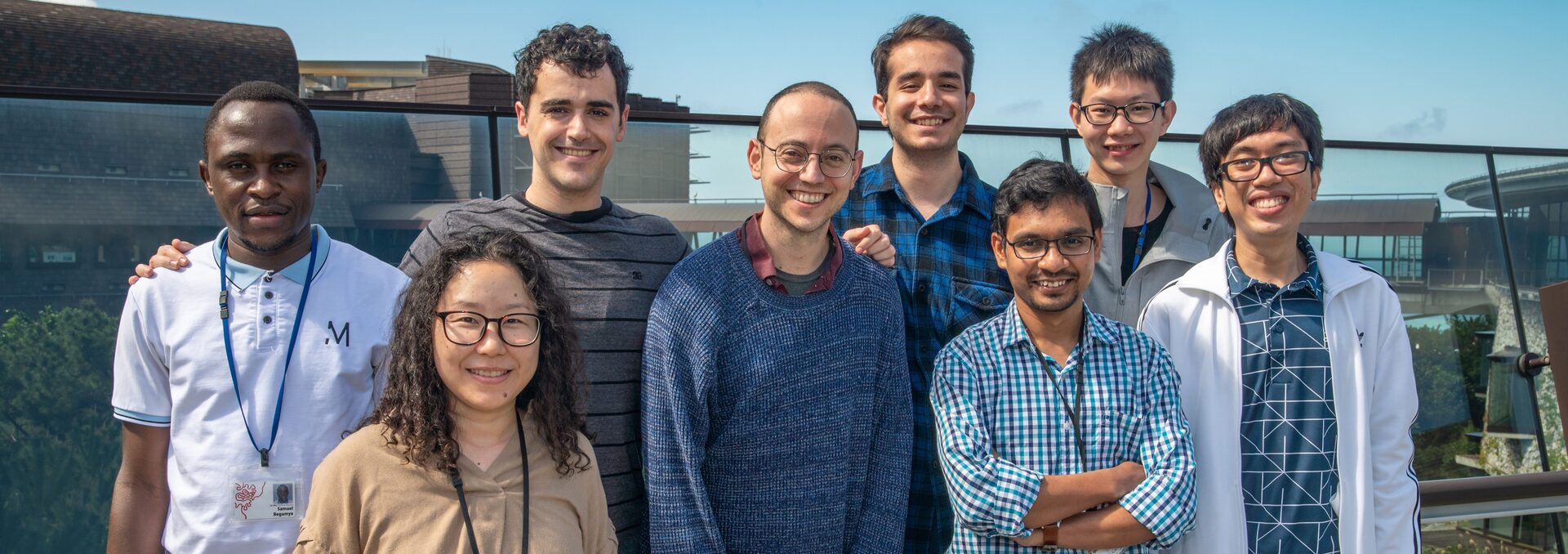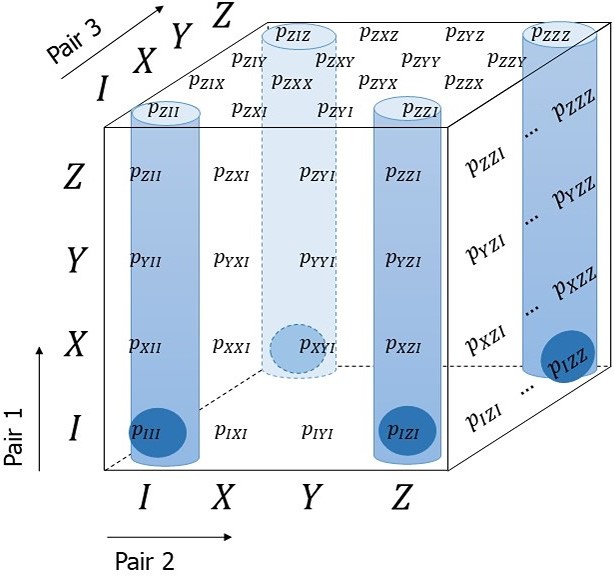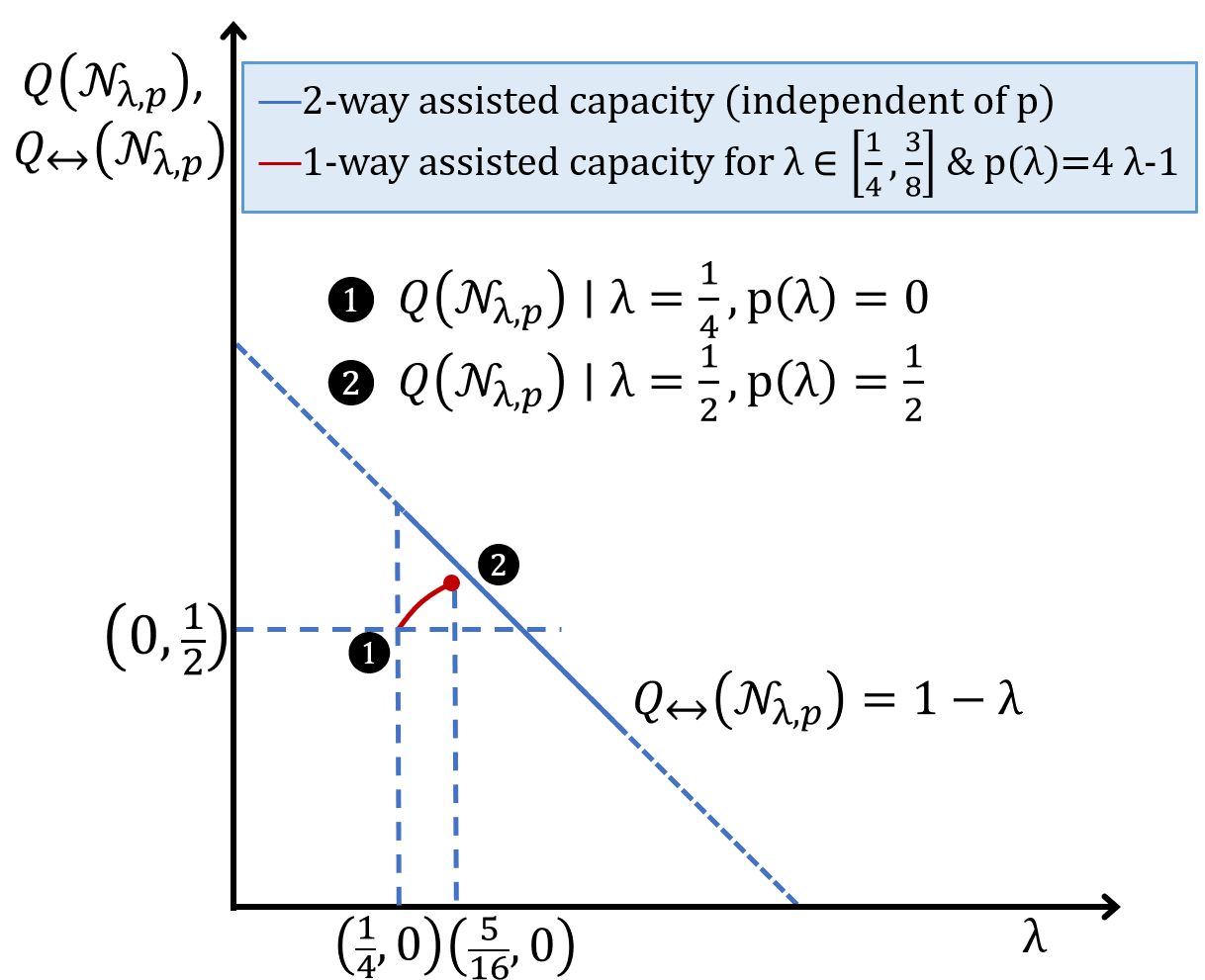FY2022 Annual Report
Networked Quantum Devices Unit
Associate Professor David Elkouss

Abstract
The networked quantum devices unit started activity in 2022. The goal of the unit is to develop the necessary theoretical tools such as novel error correction mechanisms as well as insights into the fundamental limitations, cryptographic protocols, or simulation algorithms that will enable near-term proof of principle demonstrations of quantum networks and their applications.
1. Staff
- David Elkouss, associate professor
- Yukari Yoseda, research unit administrator
- Ananda G. Maity, postdoctoral researcher
- Behrad Ahmadpour, research intern
- Javier Pagan, research intern
- Joshua Carlo Aparicio Casapao, rotation student (Q4 2022) & PhD student (from Q1 2023)
- Samuel Begumya, rotation student (Q1 2023)
- Shin Sun, rotation student (Q4 2022)
2. Collaborations
2.1 Enumeration of distillation protocols
- Type of collaboration: Joint research
- Researchers:
- David Elkouss, OIST
- Shin Sun, OIST
- Kenneth Goodenough, University of Massachussets Amherst
- Sebastian de Bone, TU Delft
- Sarah Jansen, University of Amsterdam
- Dion Gijswijt, TU Delft
- Vaishnavi Addala, MIT
- Stefan Krastanov, MIT
2.2 Color centers in diamond for distributed quantum computation
- Type of collaboration: Joint research
- Researchers:
- David Elkouss, OIST
- Sebastian de Bone, TU Delft
- Siddhant Singh, TU Delft
- Tim Taminiau, TU Delft
- Connor Bradley, Univrsity of Chicago
- Stefan Wong, TU Delft
- Folkert de Ronde, TU Delft
2.3 Resources in quantum communications
- Type of collaboration: Joint research
- Researchers:
- David Elkouss, OIST
- Ananda Maity, OIST
- Aditya Nema, U Nagoya
- Sergii Strelchuk, U Cambridge
2.4 Indefinite causal structures as a resource for quantum communications
- Type of collaboration: Joint research
- Researchers:
- Ananda G. Maity, OIST
- Samyadeb Bhattacharya, IIIT Hyderabad
- Debarshi Das, UCL London
- Arkaprabha Ghosal, IMSC, Chennai
- Pratik Ghosal, Bose Institute, Kolkata
2.5 Experimental design for testing quantum nature of gravity
- Type of collaboration: Joint research
- Researchers:
- Ananda G. Maity, OIST
- A. S. Majumdar, SNBNCBS, Kolkata
- Manik Banik, SNBNCBS, Kolkata
- Partha Nandi, SNBNCBS, Kolkata
3. Activities and Findings
3.1 Quantum superposition of causal structures is a universal resource for local implementation of nonlocal quantum operations
Spatial separation restricts the set of locally implementable quantum operations on distributed multipartite quantum systems. We propose that indefinite causal structure arising due to quantum superposition of different space-time geometries can be used as an independent universal resource for local implementation of any quantum operation on spatially distributed quantum systems. Consequently, all such quantum tasks that are not accomplishable by local operations and classical communication (LOCC) only also become locally accomplishable. We show that exploiting indefinite causal structure as the sole resource, it is possible to perfectly teleport the state of one agent's subsystem to the other distant laboratory in such a way that the agent at the distant laboratory can have access to the whole initially shared state in his or her laboratory and can perform any global quantum operation on the joint state locally. We further find that, after the teleportation process, the resource—indefinite causal structure of the space-time does not get consumed. Hence, after implementing the desired quantum operation the state of the first agent's subsystem can be teleported back to its previous laboratory using the same resource. We show that this two-way teleportation is not always necessary for locally executing all nonlocal quantum tasks that are not realizable by LOCC only. Without invoking any kind of teleportation, we present a protocol for perfect local discrimination of the set of four Bell states that exploits indefinite causal structure as the sole resource. As immediate upshots, we present some more examples of such nonlocal tasks as local discrimination of the set of states exhibiting “quantum nonlocality without entanglement” and activation of bound entangled states that are also achievable by our proposed protocol incorporating indefinite causal structure as a resource.

Figure: Schematics of the protocol for exploiting indefinite causal structure as resource for local implementation of nonlocal operations.
3.2 Efficient enumeration of bilocal Clifford protocols
Entanglement distillation is an essential building block in quantum communication protocols. We studied the class of near-term implementable distillation protocols that use bilocal Clifford operations followed by a single round of communication. To study this class of distillation protocols, we introduced tools to enumerate and optimise over all protocols for up to n = 5 (not necessarily equal) Bell-diagonal states using a commodity desktop computer. Furthermore, by exploiting the symmetries of the input states, we found all protocols for up to n = 8 copies of a Werner state. For the latter case, we presented circuits that achieve the highest fidelity with perfect operations and no decoherence. These circuits have modest depth and number of two-qubit gates. Our results were based on a correspondence between distillation protocols and double cosets of the symplectic group, and improve on previously known protocols.

Figure: Probabilities that describe the state of a system consisting of 3 qubit pairs. The light blue cylinders highlight the probabilities that correspond to the 'pillars'. The sum of these probabilities yields the success probability of a distillation protocol. The darker circles highlight the probabilities that correspond to the 'base'. These probabilities correspond to the fidelity of the output state of the protocol. Note that we have only labelled the coefficients that are on the front, right and top face.
3.3 Noise is resource-contextual in quantum communication
Understanding the information transmission capability of a quantum channel remains one of the fundamental problems in quantum information processing. In contrast to classical channels, the information carrying capability of quantum channels are contextual: the capabilities of a quantum channel do not suffice to fully describe its potential. One of the most significant manifestations of this is the case where the capacity of two quantum channels used together can be larger than the sum of the individual capacities. This effect is called superadditivity.
This year, we investigated a one-parameter family of channels with an intriguing behavior. If we increase this parameter, it leads to the decrease in two-way quantum capacity, and thus can be regarded as `noise'. Surprisingly, it has the opposite effect on the one-way communication rates: the one-way capacity increases! This demonstrates that noise is context dependent.

Figure: This figure shows a family of channels for which while the two-way capacity decreases as a function of the parameter the one-way capacity increases.
4. Publications
4.1 Journals
- P. Ghosal, A. Ghosal, D. Das, & A. G. Maity, "Quantum superposition of causal structures as a universal resource for local implementation of nonlocal quantum operations", Physical Review A 107, 022613 (2023). https://doi.org/10.1103/PhysRevA.107.022613
- C. E. Bradley, S. W. de Bone, P. F. W. Möller, S. Baier, M. J. Degen, S. J. H. Loenen, H. P. Bartling, M. Markham, D. J. Twitchen, R. Hanson, D. Elkouss & T. H. Taminiau, "Robust quantum-network memory based on spin qubits in isotopically engineered diamond", npj Quantum Information 8, 122 (2022). doi.org/10.1038/s41534-022-00637-w
- S. Jansen, K. Goodenough, S. de Bone, D. Gijswijt, and D. Elkouss "Enumerating all bilocal Clifford distillation protocols through symmetry reduction", Quantum 6, 715 (2022). doi.org/10.22331/q-2022-05-19-715
- T. Coopmans, S. Brand, and D. Elkouss "Improved analytical bounds on delivery times of long-distance entanglement", Physical Review A 105, 012608 (2022). Editors' Suggestion. doi.org/10.1103/PhysRevA.105.012608
4.2 Books and other one-time publications
Nothing to report
4.3 Oral and Poster Presentations
- Invited oral presentation. David Elkouss. Title: Tools for designing quantum networks. Venue and date: 53rd Annual Meeting of the APS Division of Atomic, Molecular and Optical Physics. Focus Session: Quantum Networks: Prospects and Challenges. June 2 2022. Link
- Invited oral presentation. David Elkouss, Title: Optimizing small quantum networks, Venue and date: 4th Seefeld Workshops on Quantum Information Theory. June 28 2022. Link
- Invited oral presentation. David Elkouss, Title: Optimizing entanglement distribution in near-term quantum networks, Venue and date: The 47th EIECE Quantum Information Technology Symposium (QIT47). December 8 2022. Link
- Invited oral presentation. David Elkouss, Title: Analytical and numerical bounds on entanglement delivery waiting times, Venue and date: SPIE Photonics West 2023. January 31 2023. Link
- Invited oral presentation. David Elkouss, Title: From the foundations of quantum mechanics to the future quantum internet, Venue and date: International School on Physics & Allied Disciplines, National Centre for Physics, Islamabad, Pakistan. March 17. Link
- Panel presentation. David Elkouss, Title: Young researcher panel session. Venue and date: Quantum Innovation 2022. November 29 2022. Link
- Poster presentation: Ananda G. Maity, Title: Certifying arbitrary outcome quantum measurement requiring neither entanglement nor any dimensional restriction. Venue and date: OIST Center for Quantum Technologies Mini Symposium, November 9 2022.
- Poster presentation: Ananda G. Maity, Title: Estimating noise in a quantum network, Venue and date: Moonshot workshop, March 29 2023.
5. Intellectual Property Rights and Other Specific Achievements
Nothing to report
6. Meetings and Events
6.1 Quantum network testbed in Japan
- Date: November 9, 2022
- Venue: OIST Campus center building B250
- Co-organizers: Part of the OIST Center for Quantum Technologies Mini Symposium
- Speaker: Project Associate Professor Shota Nagayama (Keio University)
6.2 Open problems in continuous variable quantum key distribution
- Date: December 22, 2022
- Venue: OIST Campus Center Building B503
- Speakers: Dr. Ryo Namiki (Gakushuin University)
6.3 Theoretical tools for near-term quantum communications
- Date: February 17, 2023
- Venue: OIST Campus L4F01
- Co-organizers: OIST internal seminar series
- Speaker: Dr. Ananda G. Maity (OIST)
6.4 Security of quantum key distribution in realistic conditions
- Date: February 20, 2023
- Venue: OIST Campus L4E01
- Speaker: Dr. Guillermo Currás-Lorenzo (Toyama University)
6.5 Towards implementation security of quantum key distribution
- Date: February 20, 2023
- Venue: OIST Campus L4E01
- Speaker: Dr. Margarida Pereira (Toyama University)
7. Other
- Helped with the production of a video from Veritasium on quantum factoring.



